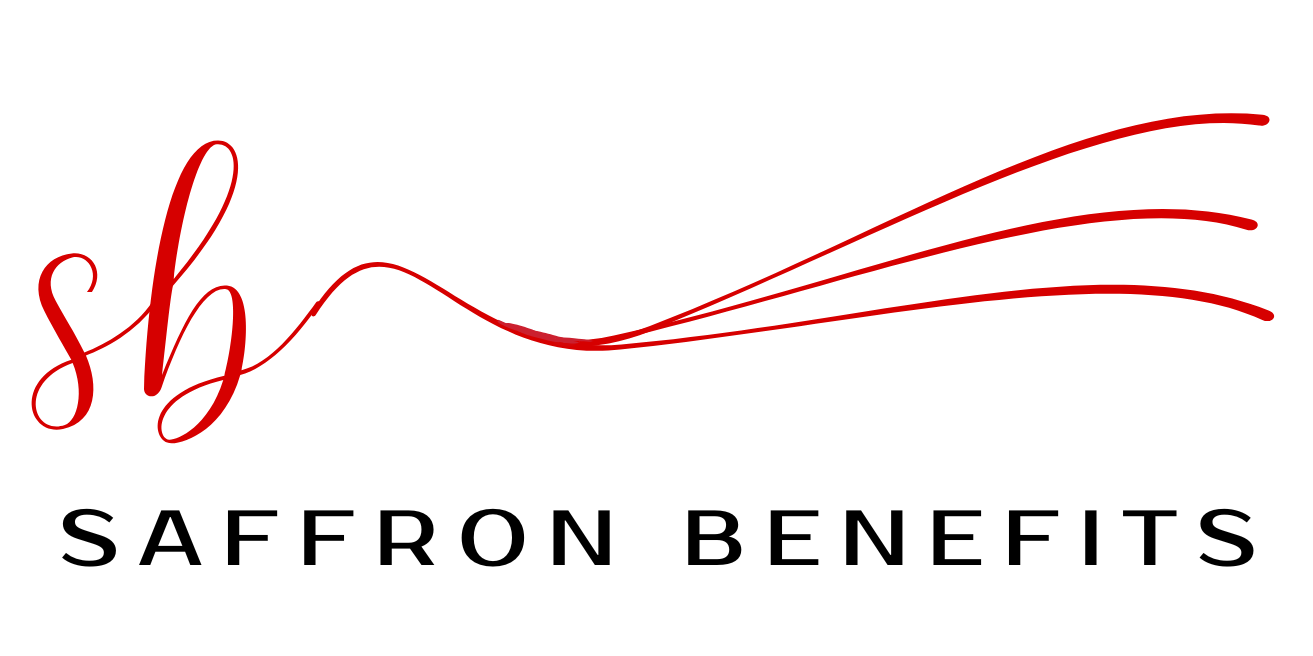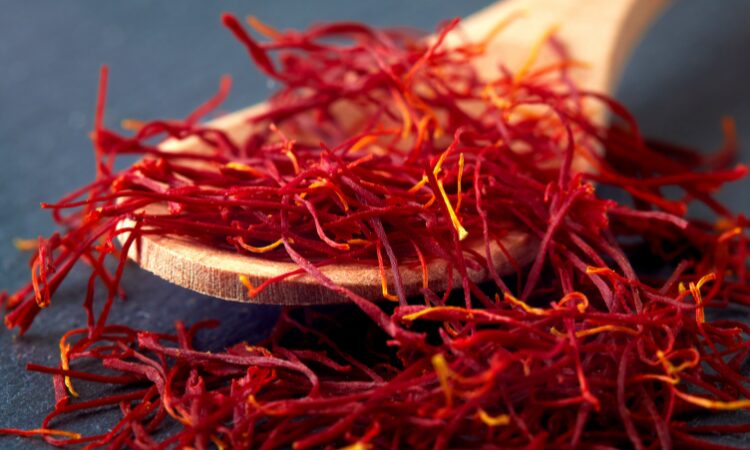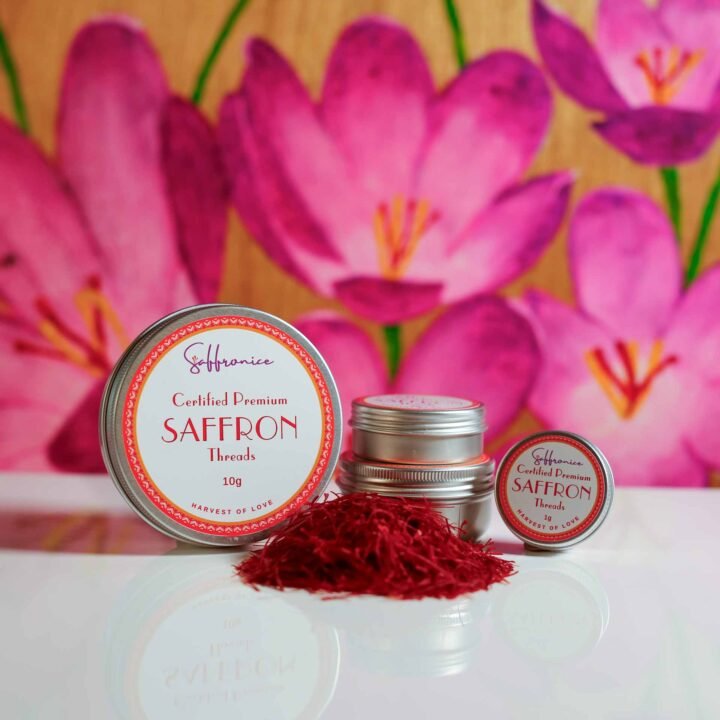📌 Quick Answer: Saffron threads offer superior flavor intensity, longer shelf life (2-3 years), and authentic visual appeal ideal for traditional dishes, while saffron powder provides convenience with instant dissolution and uniform distribution but shorter shelf life (6 months) and potential flavor loss from oxidation.
Saffron, often referred to as the “golden spice,” is highly valued in cuisines worldwide. Its ability to add vibrant golden color, delightful fragrance, and unique taste makes it an essential ingredient in many cooking styles. Understanding what saffron is helps appreciate why this precious spice commands such reverence across cultures.
There are two main forms of saffron available to culinary enthusiasts:
- Saffron powder: Finely ground saffron threads offering convenience and easy incorporation
- Saffron threads: Whole dried stigmas of the Crocus sativus flower, prized for intense flavor and aroma
Chef’s Professional Tip: After decades in professional kitchens, I’ve learned that choosing between powder and threads significantly impacts both the cooking process and final results. Understanding each form’s strengths ensures optimal culinary outcomes.
This comprehensive guide explores these differences, covering potency, shelf life, ease of use, and culinary applications to help you make informed decisions for your specific cooking needs.
The Rich Heritage of Saffron
Saffron holds a distinguished place in culinary history, with its golden threads weaving through Mediterranean, Middle Eastern, and Persian cuisines for over three millennia. This precious spice represents more than flavoring—it embodies cultural identity and culinary artistry.
Global Culinary Applications
Saffron’s versatility extends across diverse culinary traditions:
Traditional Desserts: Saffron desserts, including baklava, Mahalabia, Fereni, and saffron ice cream, showcase the spice’s ability to transform sweet preparations into luxurious experiences.
Aromatic Beverages: Saffron tea benefits extend beyond flavor, providing therapeutic properties while infusing drinks with distinctive golden color and complex aroma profiles.
Signature Dishes: Persian saffron cuisine and saffron rice dishes like biryani, paella, risotto, and Persian tahdig demonstrate saffron’s transformative power in savory applications.
The historical significance of saffron in these cuisines underscores its enduring value as both a culinary staple and a cultural emblem, representing prosperity, luxury, and culinary sophistication.
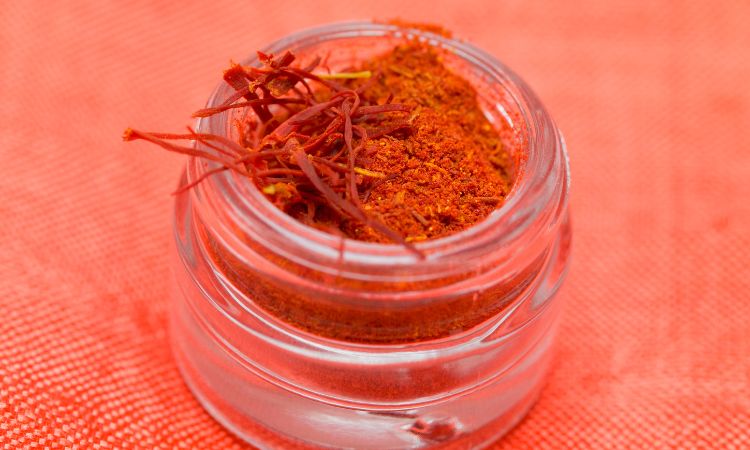
Understanding Saffron Threads: The Gold Standard
Saffron threads, recognized by their vibrant crimson color and trumpet-shaped tips, are the whole dried stigmas carefully hand-harvested from Crocus sativus flowers. Saffron cultivation requires extensive labor—each flower produces only three stigmas, making threads the pure, unadulterated form of this precious spice.
Flavor Profile and Aromatic Complexity
Saffron threads deliver distinctively rich and complex flavor profiles. When properly prepared, they impart a deep, earthy taste with hints of floral sweetness and subtle metallic undertones. The intense aroma released from quality threads is unmistakable—luxurious and pervasive—adding ethereal quality to dishes.
Sensory Characteristics:
- Aroma: Complex honey-hay fragrance with metallic notes
- Flavor: Subtle bitterness balanced with floral sweetness
- Color release: Gradual golden transformation in liquids
- Texture: Individual threads maintain structural integrity
Superior Potency and Flavor Preservation
Compared to ground forms, saffron threads maintain significantly higher potency. Learning how to cook with saffron threads reveals their ability to preserve full aromatic compounds until the moment of use, ensuring dishes benefit from maximum impact.
Potency Advantages:
- Volatile compounds remain protected within the thread structure
- Oxidation resistance prevents flavor degradation
- Controlled release through proper soaking techniques
- Maximum bioactive compound retention
Visual Impact and Authenticity Markers
The visual presence of whole saffron threads cannot be overstated. In traditional recipes like Persian Tahdig or Spanish Paella, these vivid red strands enhance both flavor and aesthetic appeal. Their unique appearance signifies authenticity and careful preparation, distinguishing genuine dishes from imitations.
Benefits and Considerations of Saffron Threads
Primary Benefits:
- Extended shelf life: Properly stored threads retain potency for 2-3 years
- Superior flavor intensity: Maximum aromatic compound concentration
- Authenticity verification: Visual confirmation of quality and purity
- Controlled extraction: Precise flavor development through soaking
Usage Considerations:
- Preparation time: Requires 10-15 minutes soaking before use
- Technique sensitivity: Improper steeping can develop bitter notes
- Cost premium: Higher price reflecting labor-intensive harvesting
- Storage requirements: Specific conditions needed for quality preservation
Food Scientist’s Note: Thread structure protects delicate volatile compounds from oxidation, preserving the full spectrum of aromatic molecules responsible for saffron’s distinctive sensory profile.
Exploring Saffron Powder: Convenience and Consistency
Saffron powder presents a finely ground texture created through careful grinding of dried saffron threads. This processing aims to preserve delicate flavors while providing immediate usability, resulting in vibrant red-gold powder with a strong, sweet aroma featuring floral and honey notes.
Processing Effects on Flavor Development
The grinding process exposes increased surface area to air, subtly altering flavor compared to whole threads. While saffron powder remains highly aromatic, depth and complexity may soften due to exposure and oxidation—natural consequences of breaking down stigma structure.
Flavor Characteristics:
- Immediate intensity: Bold, earthy flavor with bittersweet undertones
- Reduced complexity: Some subtle notes may be less pronounced
- Quick release: Instant flavor and color development
- Uniform profile: Consistent flavor distribution throughout dishes
Convenience and Application Advantages
Instant Readiness: Saffron powder’s greatest appeal lies in convenience—no pre-soaking or crushing required. A pinch sprinkled directly into batters, doughs, sauces, or broths provides immediate impact.
Even Distribution: Powder dissolves seamlessly into mixtures, ideal for recipes demanding uniform color and taste throughout, particularly valuable in baking applications and dessert preparations.
Time Efficiency: Professional chefs prefer powder when consistency and speed are crucial. Dishes requiring rapid color development benefit from powder’s instant infusion capabilities.
Practical Applications and Versatility
Optimal Use Cases:
- Baked goods: Saffron cookies, breads, and pastries
- Beverages: Instant color and flavor in milk, teas, and cocktails
- Quick sauces: Immediate incorporation without texture concerns
- Uniform desserts: Consistent coloring in ice creams and puddings
Measurement Precision: Powder allows exact dosing for predictable results, particularly valuable in commercial applications requiring standardized outcomes.
Limitations and Quality Concerns
Flavor Integrity Issues:
- Oxidation susceptibility: Exposed surface area accelerates compound degradation
- Shortened shelf life: Quality deterioration within 6-12 months, even under optimal storage
- Reduced complexity: Some aromatic subtleties were lost during processing
Adulteration Risks: Powdered forms face higher contamination risks with fillers, artificial colorants, or lower-grade materials. Understanding how to spot fake saffron becomes crucial when purchasing powder forms.
Quality Assurance Strategies:
- Source from reputable suppliers with transparency
- Verify origin certificates and quality testing
- Choose powder from trusted saffron brands
- Understand saffron quality standards for evaluation
Comparative Analysis: Performance Across Applications
Culinary Performance Evaluation
Traditional Cooking Methods: Saffron threads excel in slow-cooking applications where gradual flavor development enhances dish complexity. Persian rice dishes, Spanish paellas, and French bouillabaisse benefit from threads’ controlled release properties.
Modern Cooking Techniques: Powder performs better in rapid cooking methods, molecular gastronomy applications, and situations requiring instant color development without texture considerations.
Storage and Shelf Life Comparison
Thread Storage Requirements: Proper saffron storage methods for threads include airtight glass containers, cool dark locations, and protection from moisture. Quality threads maintain potency for 2-3 years under optimal conditions.
Powder Storage Considerations: Powder requires similar storage conditions but shows accelerated quality decline due to increased surface exposure. Even under ideal conditions, powder rarely maintains peak quality beyond 6-12 months.
Storage Environment Factors:
- Temperature stability below 68°F (20°C)
- Humidity control under 10%
- Light protection preventing photodegradation
- Airtight sealing prevents oxidation
Economic and Value Considerations
Cost-Benefit Analysis: Threads typically command higher prices reflecting superior quality and longer shelf life. Powder offers lower entry costs but may require more frequent replacement due to quality degradation.
Value Proposition Factors:
- Threads: Higher upfront cost, longer usability, superior flavor
- Powder: Lower initial investment, convenience premium, shorter lifespan
- Usage patterns: Frequency of use affects optimal form selection
Cultural Significance and Authenticity Factors
Regional Preferences and Traditional Applications
Persian Culinary Traditions: Iranian cuisine highly values saffron threads for dishes like Zereshk Polo, Tahdig, and delicate desserts such as Sholeh Zard. The soaking and blooming process is integral to achieving authentic flavors that define Persian cooking excellence.
Spanish Heritage Applications: Spanish chefs treasure saffron threads for paella and arroz con leche preparation. Thread visibility signifies authenticity, particularly important in traditional gatherings and cultural celebrations.
Indian Festival Usage: From Mughal biryanis to saffron-infused sweets like Kesar Peda or Kulfi, both forms symbolize luxury during weddings and festivals, with golden color representing purity and prosperity.
Authenticity Verification and Quality Assurance
Identifying Genuine Products:
- Visual inspection: Rich red hue with orange tips indicates quality
- Aromatic evaluation: Sweet fragrance with complex undertones
- Texture assessment: Proper thread structure and flexibility
- Source verification: Clear origin documentation and certifications
Avoiding Adulteration: Imitation products often contain dyed corn silk, marigold petals, or artificial colorants that compromise both flavor and safety. A Premium vs regular saffron comparison helps identify quality indicators.
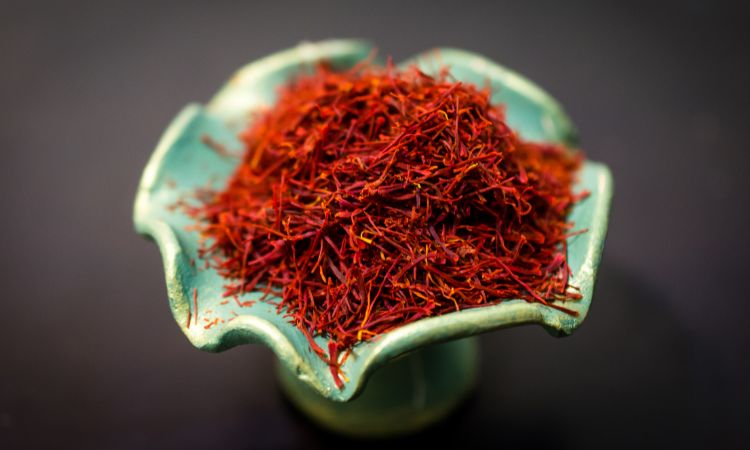
Professional Usage Guidelines and Best Practices
Optimal Preparation Techniques
Thread Preparation Method:
- Soak 10-15 threads in warm (not boiling) liquid for 10-15 minutes
- Gently crush threads to accelerate extraction
- Add both liquid and threads to dishes for maximum impact
- Time soaking based on desired intensity
Powder Application Protocol:
- Measure precise amounts using calibrated tools
- Add directly to recipes during the cooking process
- Incorporate early for color development
- Adjust quantities based on desired intensity
Recipe Selection Guidelines
Choose Threads For:
- Traditional ethnic cuisines require authenticity
- Slow-cooking methods allow for gradual extraction
- Special occasion dishes where presentation matters
- Recipes where individual thread visibility enhances appeal
Choose Powder For:
- Quick cooking applications requiring immediate results
- Baking projects needing uniform distribution
- Beverages requiring instant dissolution
- Commercial applications demanding consistency
Professional Kitchen Considerations
Commercial Food Service:
- Threads: Better for signature dishes, cultural authenticity, premium pricing
- Powder: Ideal for standardized recipes, quick service, and cost control
Home Cooking Applications:
- Threads: Special occasions, traditional recipes, quality-focused cooking
- Powder: Everyday use, convenience cooking, experimentation
Purchasing and Quality Assurance Strategies
Supplier Selection and Verification
When selecting saffron sources, understanding where to buy authentic saffron ensures quality and value. Reputable suppliers provide:
- Origin documentation: Clear harvesting location and date information
- Quality certifications: ISO standards and laboratory testing results
- Storage conditions: Proper handling from harvest to consumer
- Return policies: Quality satisfaction guarantees
Quality Testing and Evaluation
Home Testing Methods:
- Water test: Quality saffron releases a golden color gradually
- Aroma assessment: Complex fragrance indicates authenticity
- Visual inspection: Proper thread structure and coloration
- Taste evaluation: Subtle bitterness with floral notes
Professional Quality Metrics:
- Crocin content (coloring strength)
- Safranal levels (aroma intensity)
- Picrocrocin concentration (flavor compounds)
- Moisture content and foreign matter percentages
Making the Optimal Choice: Decision Framework
Primary Use Case Analysis
Culinary-Focused Selection:
- Traditional cooking: Threads provide authenticity and superior flavor development
- Modern applications: Powder offers convenience and consistency
- Mixed usage: Consider maintaining both forms for different applications
Budget and Value Considerations:
- Quality priority: Threads offer better long-term value despite higher upfront costs
- Convenience focus: Powder provides acceptable quality with ease
- Balanced approach: Selective use based on specific recipe requirements
Personal Preference Integration
Cooking Style Alignment:
- Traditional enthusiasts: Threads align with authentic preparation methods
- Convenience seekers: Powder suits fast-paced cooking styles
- Quality purists: Threads deliver superior sensory experiences
Experience Level Factors:
- Novice cooks: Powder reduces technique barriers
- Experienced chefs: Threads provide greater control and complexity
- Professional applications: Both forms serve specific operational needs
Conclusion: Balancing Quality, Convenience, and Authenticity
The choice between saffron powder and threads reflects a fundamental decision between convenience and complexity, tradition and modernity. Saffron threads represent the gold standard for flavor intensity, shelf life, and authentic culinary experiences, making them ideal for traditional dishes requiring gradual flavor development and visual appeal.
Conversely, saffron powder serves modern cooking needs through immediate usability, uniform distribution, and consistent results, particularly valuable in commercial applications and quick cooking methods.
Key Decision Factors:
- Flavor priority: Threads deliver superior intensity and complexity
- Convenience needs: Powder offers immediate usability and consistent results
- Storage considerations: Threads provide longer shelf life and better value
- Authenticity requirements: Threads ensure traditional preparation methods
- Budget constraints: Consider long-term value versus upfront costs
Professional Recommendations: Serious culinary enthusiasts benefit from maintaining both forms—threads for special occasions and authentic preparations, powder for everyday convenience and quick applications. This dual approach maximizes saffron’s potential while accommodating diverse cooking needs.
Understanding each form’s unique characteristics empowers informed decisions that enhance culinary results while respecting both traditional wisdom and modern practicality. Whether pursuing authentic cultural dishes or innovative modern applications, proper saffron selection elevates cooking from routine to remarkable.
FAQs (Frequently Asked Questions)
What are the main differences between saffron threads and powder in terms of flavor and potency?
Saffron threads offer superior flavor intensity and complexity due to protected volatile compounds within their structure, maintaining full aromatic profiles until use. Powder provides immediate flavor release but may lose some complexity due to oxidation during grinding, resulting in slightly diminished depth compared to properly prepared threads.
Which form of saffron has a longer shelf life and better storage characteristics?
Saffron threads maintain potency for 2-3 years when properly stored in airtight containers away from light and moisture, while powder typically retains peak quality for only 6-12 months due to increased surface exposure accelerating oxidation. Threads offer better long-term value despite higher upfront costs.
When should I choose saffron powder over threads for cooking applications?
Choose saffron powder for quick cooking methods, baking applications requiring uniform distribution, beverages needing instant dissolution, and situations where convenience and speed are priorities. Powder works best when immediate color development and consistent results are more important than complex flavor development.
How can I ensure authenticity when purchasing saffron powder versus threads?
Threads are easier to authenticate through visual inspection—look for deep red color with orange tips, trumpet-shaped ends, and natural size variation. Powder requires more careful sourcing from reputable suppliers with quality certifications, laboratory testing results, and clear origin documentation to avoid adulterated products.
What preparation techniques work best for each form of saffron?
Saffron threads require soaking in warm liquid for 10-15 minutes before use, allowing controlled extraction and maximum flavor development. Powder can be added directly to recipes without preparation, but should be incorporated early in cooking for optimal color and flavor distribution throughout the dish.
Are there specific cuisines or dishes that work better with one form over the other?
Traditional ethnic cuisines like Persian, Spanish, and Indian dishes often prefer threads for authenticity and visual appeal, while modern cooking applications, baking, and commercial food service frequently choose powder for consistency and convenience. The choice depends on whether cultural authenticity or practical efficiency is the priority.
